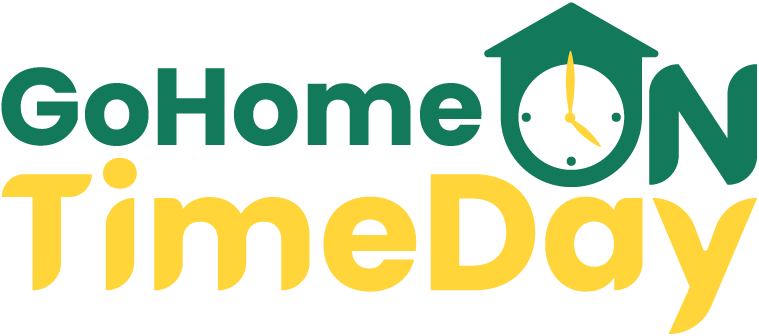Employing basic skills in your work can significantly boost your professional development.
But first, you’ve got to identify them. That’s only sometimes easy. We’re often blind to our abilities.
Once you’ve got a handle on what you’re good at, you can put those skills to work, turning weaknesses into strengths.
Whether you’re acing interviews or smashing sales targets, your core competencies are your secret weapon.
Let’s explore how to unlock them.
Key Takeaways
- Identifying it is crucial for job satisfaction, career advancement, and personal growth.
- Assessment tools, feedback analysis, self-reflection, and job performance reviews are effective techniques for identifying unique professional strengths.
- Weaknesses can be transformed into strengths through self-awareness, acceptance, and focused effort.
- In sales and communication, strengths such as empathy, negotiation skills, problem-solving, resilience, and creativity are essential for success.
Understanding the Importance of Identifying Your Key Strengths in the Workplace

Recognizing your core competencies at work is crucial for many reasons.
Firstly, it plays a significant role in your success in the workplace.
Secondly, it can significantly enhance your job satisfaction and chances for career advancement.
Moreover, it’s directly linked to personal growth and improved job performance, which I’ll further discuss.
The Role of Employee Strengths in Workplace Success
Understanding and leveraging our core competencies at work is crucial to achieving professional success.
The role of employee strengths should be considered as they fuel workplace success. They define our capacity to perform, lead, and excel.
Harnessing these strengths allows us to work more effectively, boosting productivity and fostering a positive work environment.
Moreover, knowing our strengths makes us more engaged and satisfied in our roles, contributing to workplace success.
And it’s not just individual success at stake; a team that recognizes and utilizes each member’s strengths can achieve remarkable results.
How Strengths Contribute to Job Satisfaction and Career Advancement
While I’ve found that many factors influence job satisfaction and career advancement, my core competencies determine how fulfilled I am in my role and how far I can advance in my career.
Understanding these strengths at work has been crucial for my employee development. When I can leverage my strengths, I find greater satisfaction in my tasks and challenges, contributing significantly to my overall job satisfaction.
Additionally, demonstrating these strengths often leads to recognition and opportunities for advancement, enhancing my career growth.
Therefore, it’s no exaggeration to say that identifying and harnessing my strengths is indispensable for my job satisfaction and career advancement.
Linking Strengths to Personal Growth and Job Performance
Harnessing my core competencies isn’t just beneficial for job satisfaction and career advancement; it also fosters personal growth and enhances job performance significantly. Understanding the importance of identifying your core competencies at work is crucial to achieving professional mastery.
Here’s a brief table showcasing how linking strengths to personal growth impacts job performance:
| Key Strengths at Work | Impact on Job Performance |
| Communication | Enhanced team collaboration |
| Problem-solving | Improved decision-making |
| Leadership | Increased team productivity |
| Creativity | Enhanced innovation |
These employee strengths show that you’re not just boosting your workplace performance when you identify your workplace strengths. You’re also developing as an individual, expanding your skill set, and becoming a more well-rounded professional.
How to Identify Your Unique Strengths as a Professional

Let’s explore how to identify our unique professional strengths.
We’ll be looking at assessment tools and techniques, the role of self-reflection, and the value of feedback from our colleagues.
Identifying our strengths isn’t just about what we’re good at, it’s about understanding where our true potential lies.
Assessment Tools and Techniques for Identifying Your Strengths
I’ve found that various assessment tools and techniques can be beneficial in identifying my unique professional strengths.
These methods provide me with a comprehensive list of strengths, helping me to highlight examples of strengths that I may have overlooked:
- Strengths test: These can help you identify your strengths, especially those you mightn’t be aware of.
- Feedback analysis: Feedback from colleagues or superiors can reveal strengths you didn’t know you had.
- Self-reflection: Thinking about your achievements and what made them successful can help identify your strengths.
- Job performance reviews: These often highlight areas where you excel, indicating your strengths.
- Personal SWOT analysis: This tool can help analyze your strengths and weaknesses in a structured way.
The Importance of Self-reflection in Recognizing Strengths
Self-reflection plays a crucial role in recognizing my unique professional strengths. It aids in understanding my core competencies at work and personal strengths. It offers clarity on strengths and examples that might take time to be apparent.
Regular introspection helps me delve deeper into my experiences, behaviors, and responses, leading to a better understanding of where my strengths lie and how to identify them.
I can identify patterns that highlight my strengths by regularly evaluating my actions and their consequences. For instance, consistently excelling in crisis management indicates my ability to stay calm under pressure.
Thus, self-reflection is about more than just acknowledging my strengths. It’s about understanding, refining, and utilizing their roots effectively.
Seeking Feedback from Colleagues and Higher-ups
In addition to introspection, seeking feedback from peers and superiors is another practical approach I use to identify and hone my unique professional strengths. It enhances my communication skills, as I’m open to constructive criticism and dialogue.
Here’s how I do it:
- I encourage open conversations, fostering good communication skills.
- I’m mindful of non-verbal cues, which sharpens my interpersonal skills.
- I ask for feedback after projects or presentations, displaying my leadership skills.
- I participate in employee engagement initiatives to understand different viewpoints.
- I hold regular check-ins with superiors to gauge my performance.
This feedback-seeking strategy helps me understand my strengths better while highlighting areas where I can improve. It’s an ongoing process, but it’s certainly worth it.
Turning Weaknesses into Strengths: A Key to Continuous Improvement

The key to continuous improvement lies in transforming shortcomings into assets.
This transformative process starts with self-awareness and acceptance, acknowledging our imperfections and using them as stepping stones rather than stumbling blocks.
Let’s explore examples and strategies for repurposing perceived weaknesses into strengths, pushing us toward success.
Understanding the Concept of Transforming Shortcomings into Assets
As an employee, recognizing and addressing my weaknesses can often lead to developing new strengths, thus providing a path for continuous improvement. Transforming shortcomings into assets is more than just about glossing over areas of difficulty. Still, instead, it’s about leveraging them to demonstrate your strengths.
Here are some strategies I’ve found helpful in this process:
- Acknowledging my strengths and weaknesses honestly
- Seeking feedback and guidance to identify relevant strengths
- Crafting a plan to build upon these strengths
- Actively working on my weaknesses to transform them into unique strengths
- Continually reassessing and adjusting my approach
This way, my weaknesses become growth opportunities, allowing me to continually improve and excel in my work.
Role of Self-awareness and Acceptance in Transforming Weaknesses
Embracing self-awareness and acceptance is crucial in transforming my shortcomings into assets, serving as the foundation for continuous improvement. It’s through self-awareness that I can identify my employee strengths and weaknesses.
On the other hand, acceptance allows me to recognize that weaknesses aren’t permanent; they’re areas where I can grow, learn, and improve.
In my journey, I’ve discovered that it is a continuous process. It’s not about hiding or ignoring weaknesses but reshaping them through focused effort and learning.
As someone who desires mastery, I’ve found that self-awareness and acceptance are essential. It helps me understand how my strengths and weaknesses can learn from each other, fostering a cycle of self-improvement.
Examples of How Perceived Weaknesses Can be Turned into Strengths
In my experience, transforming shortcomings into assets is an empowering process that opens opportunities for personal and professional growth.
Here’s how we can turn weaknesses in the workplace into core competency examples that highlight your strengths on a resume:
- Perfectionism: Appropriately channeled, this can lead to high-quality work and attention to detail.
- Overly critical: This can be turned into an ability to provide constructive feedback.
- Shyness: This can develop into active listening skills essential in teamwork.
- Procrastination: If managed, this can foster creativity under pressure.
- Impatience: This can evolve into a drive for efficiency and promptness.
These workplace transformations demonstrate how perceived weaknesses can become strengths, paving the way for continuous improvement.
Enhancing Your Key Strengths for Success in Sales and Communication

Knowing and applying your strengths can be a game-changer in the realm of sales and communication. It’s about continuously learning and practicing to enhance these core competencies.
Let’s talk about leveraging your core competencies for better results in these fields.
Applying your Strengths in the Context of Sales and Communication
Applying my core competencies to my sales and communication strategies significantly boosts my performance and success rates. This approach leverages my employee strengths in sales by enhancing my skills and work strengths.
Good communication is the foundation, but applying your strengths in the context of sales and communication takes it a step further.
- Using empathy to understand customer needs
- Leveraging negotiation skills to close deals
- Applying problem-solving to address client concerns
- Utilizing resilience to bounce back from rejection
- Harnessing creativity to present unique solutions
It’s not just about what you’re naturally good at; it’s about consciously applying those skills and strengths to your role. That’s the secret to sales and communication mastery.
Enhancing your Strengths through Continuous Learning and Practice
To take my sales and communication skills to the next level, I always seek opportunities to enhance my core competencies through continuous learning and practice.
I believe in the power of developing my skills and abilities, making them relevant to the job at hand. Enhancing your strengths requires a commitment to growth and constant improvement.
Here’s a table outlining my approach:
| Key Employee Strengths | Strategy for Enhancement |
| Communication Skills | Regularly engage in active listening exercises |
| Sales Skills | Attend sales training workshops |
| Problem-solving Ability | Solve puzzles to stimulate creativity |
| Leadership Skills | Take up roles in volunteer organizations |
This continuous learning and practice process isn’t just about being a better employee. It’s about becoming a master in your chosen field.
Enhancing your Strengths through Continuous Learning and Practice
Over time, I’ve realized how essential it is to continuously enhance my core competencies, particularly in sales and communication, for success in my career.
Here’s how I do it:
- I focus on continuous learning to gain new skills and improve and refine what I already know.
- I cherish every opportunity to practice these skills in the work environment, learning from successes and failures.
- I always keep an open mind, willing to learn from everyone and every situation.
- I regularly solicit feedback to understand how I can better enhance my strengths.
- I never stop pushing my boundaries, constantly challenging myself to reach new heights.
Showcasing Your Strengths in Job Interviews, Resumes, and Performance Reviews

Let’s now focus on how we can highlight our strengths in job interviews, resumes, and performance reviews.
I’ll share tips on effectively listing your core competencies on a resume and the best strategies for presenting them during interviews.
We’ll also touch on how to use your strengths in performance reviews for career advancement.
How to Effectively List Your Core Competencies on a Resume
In my experience, showcasing several core competencies on your resume can significantly increase your chances of landing career interviews and improving performance reviews.
Here’s how I effectively list my strengths:
- I identify specific strengths that align with the job description. For example, the role requires customer service skills. In that case, I’d list ‘strong communication’ or ‘problem-solving’ as one of my strengths at work.
- I provide instances where I demonstrated these strengths.
- I ensure my strengths are quantifiable. Instead of stating, ‘I’m good at sales,’ I specify ‘Increased sales by 15% in six months’.
- I mention transferrable skills. I’ve developed these strengths in one setting that can be applied to another.
- Lastly, I continually update my resume as I develop new strengths.
Best Practices for Presenting Your Strengths in Job Interviews
Having outlined how to effectively list your strengths on a resume, I’m now focusing on the best practices for presenting these strengths in career interviews, an equally crucial aspect of showcasing your value in the professional arena.
In an interview, you must list your strengths and how they make you a good employee. Be prepared with specific examples highlighting one of your identified employee strengths.
For instance, if problem-solving is a strength, provide an anecdote where this skill was pivotal. Show, don’t just tell, why this strength is valuable. It gives credibility to your claim and makes for a more engaging conversation.
Leveraging Your Strengths During Performance Reviews for Career Advancement
Now, I will dig into how you can leverage your core competencies during performance reviews for career advancement. It’s about more than just identifying employee strengths. It’s about showing how they add value.
Here are some strategies:
- Delineate how your core competencies at work have led to tangible results.
- Frame your strengths in the context of team or organizational goals.
- Be proactive and suggest ways your strengths can address future challenges.
- Provide specific examples that demonstrate your strengths.
- Request opportunities that allow for further leveraging of your strengths.
Frequently Asked Questions
How Can I Help My Team Identify and Utilize Their Core Competencies at Work?
I’ll initiate conversations about individual talents and then provide opportunities for team members to utilize these skills. I’ll also encourage open feedback, fostering an environment where everyone’s strengths are recognized and effectively used.
Can My Strengths and Professional Strengths Overlap, and if So, How Can I Leverage Them Together?
Personal strengths can overlap with professional ones. I’ve found that leveraging my communication skills, for instance, has enhanced my relationships and my ability to lead at work.
How Can I Maintain a Balanced Approach Between Improving My Weaknesses and Enhancing My Strengths?
Balancing the improvement of weaknesses with enhancing strengths requires self-awareness and strategy. I constantly assess my skills, focusing on strengthening what I’m good at while addressing areas that need improvement through learning and practice.
Are There Specific Strengths That Are More Valued in Leadership Roles?
In leadership roles, particular strengths are indeed more valued. These include effective communication, decision-making skills, empathy, resilience, and strategic thinking. They’re not just valued but crucial for successful leadership.
Can I Use My Strengths to Mitigate Job Stress and Burnout?
I can use my strengths to reduce job stress and burnout. By leveraging what I’m naturally good at, I’m more efficient and satisfied, decreasing my feeling of being overwhelmed and exhausted.
Conclusion
In conclusion, identifying my core competencies in the workplace is vital for my professional growth. Acknowledging my unique abilities, I can turn my weaknesses into strengths and continuously improve.
Enhancing these strengths, especially in sales and communication, increases my success. Showcasing these strengths in job interviews, resumes, and performance reviews highlights my abilities. It boosts my confidence, propelling me toward achieving my career goals.

